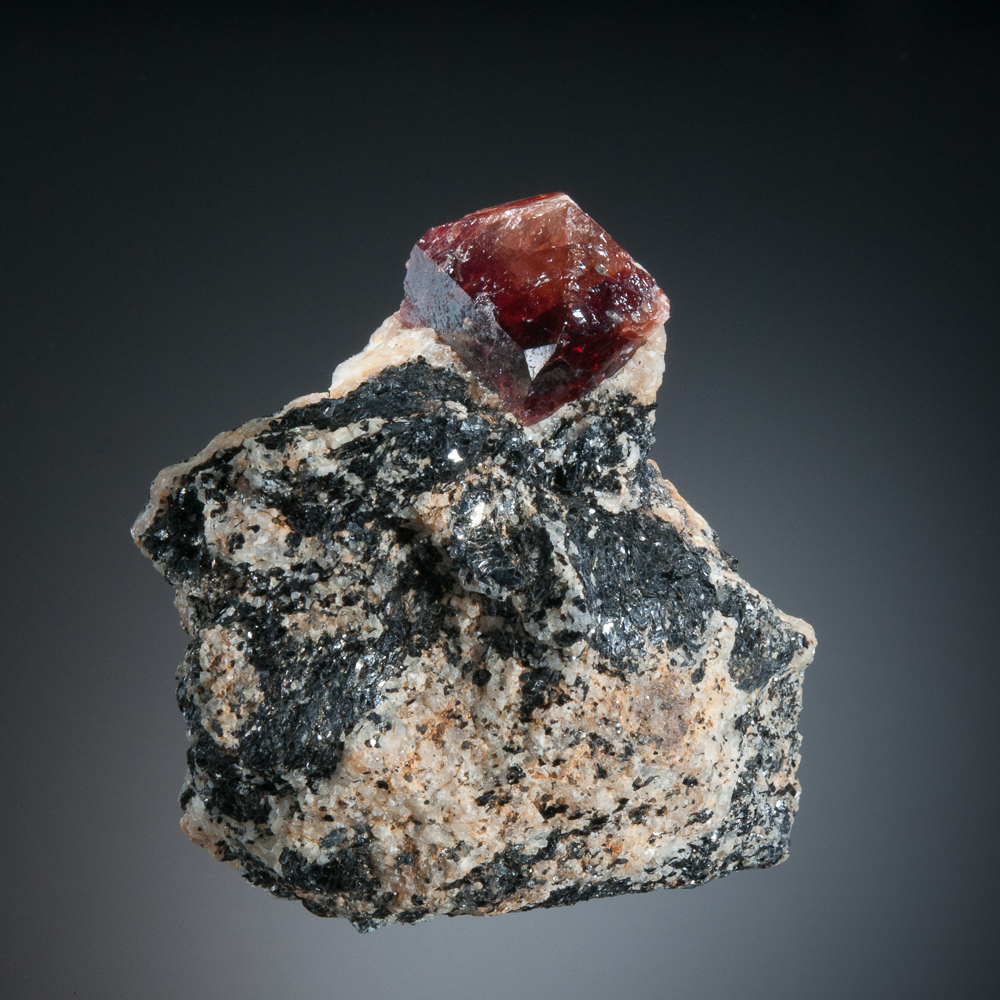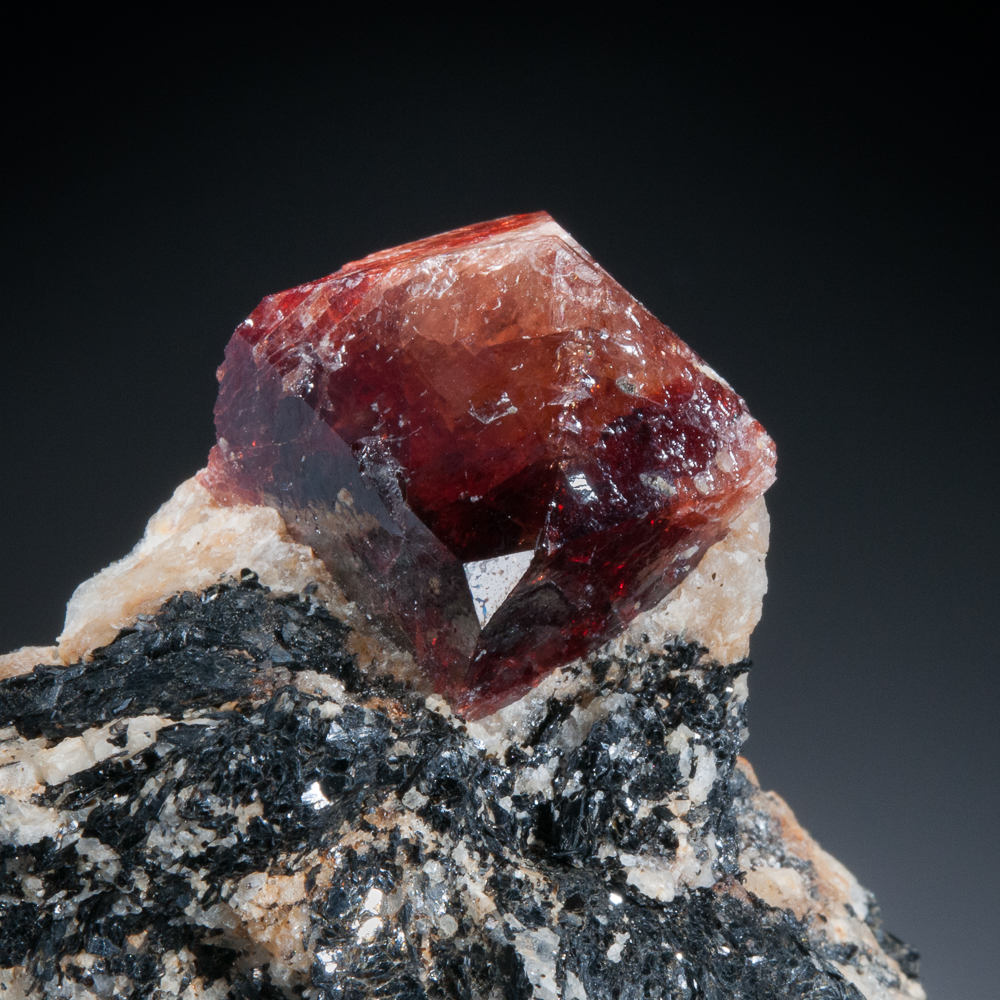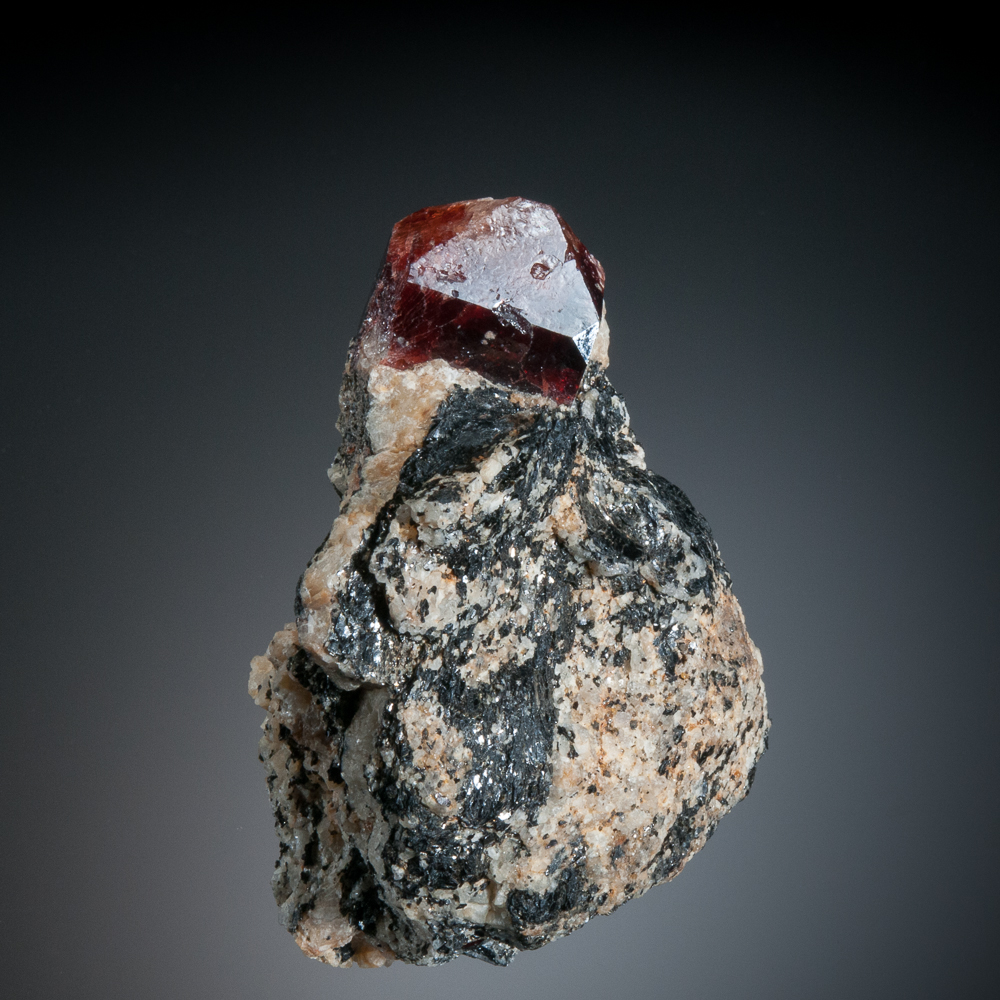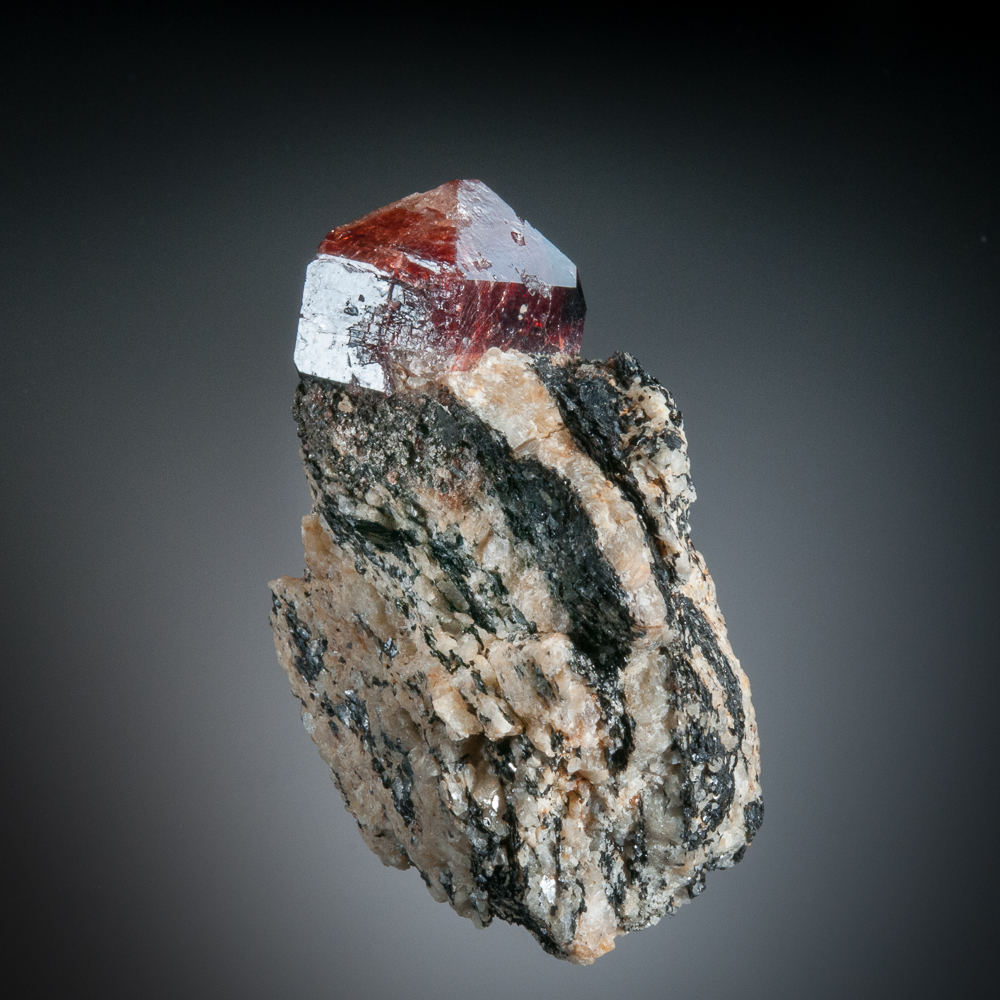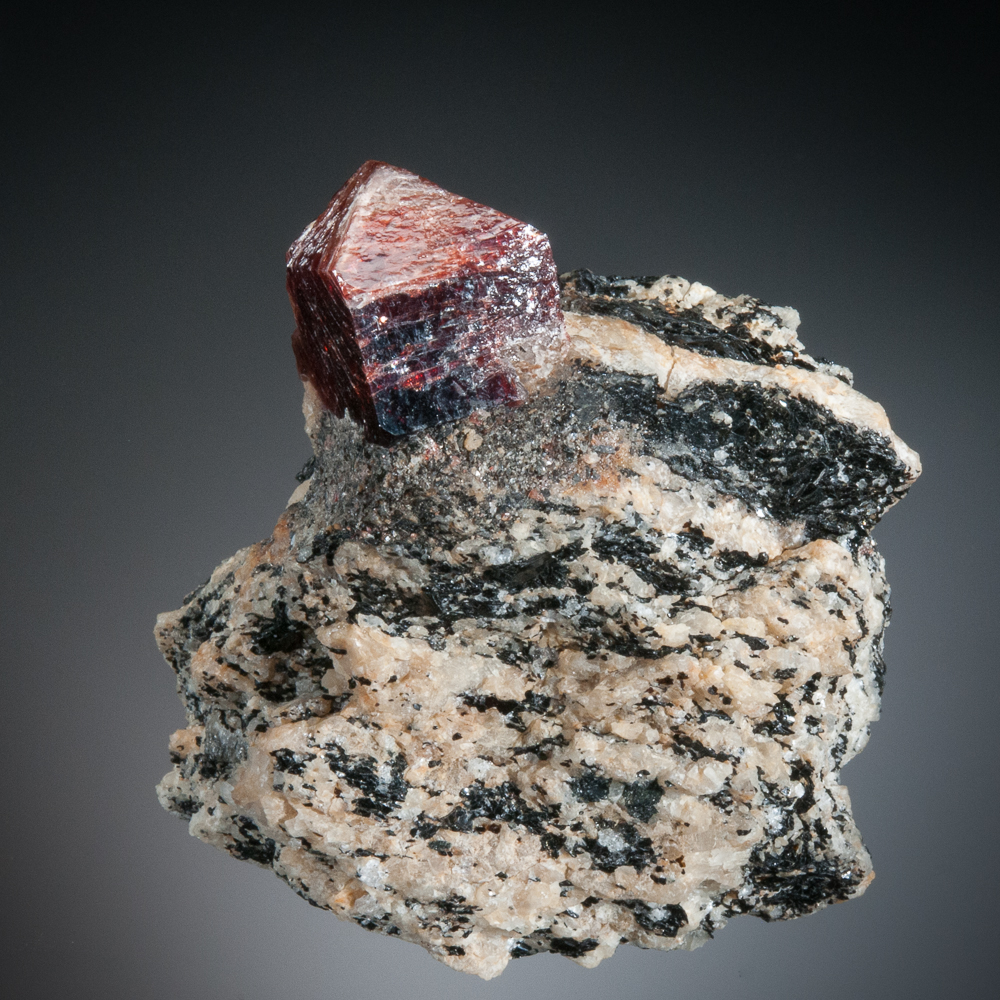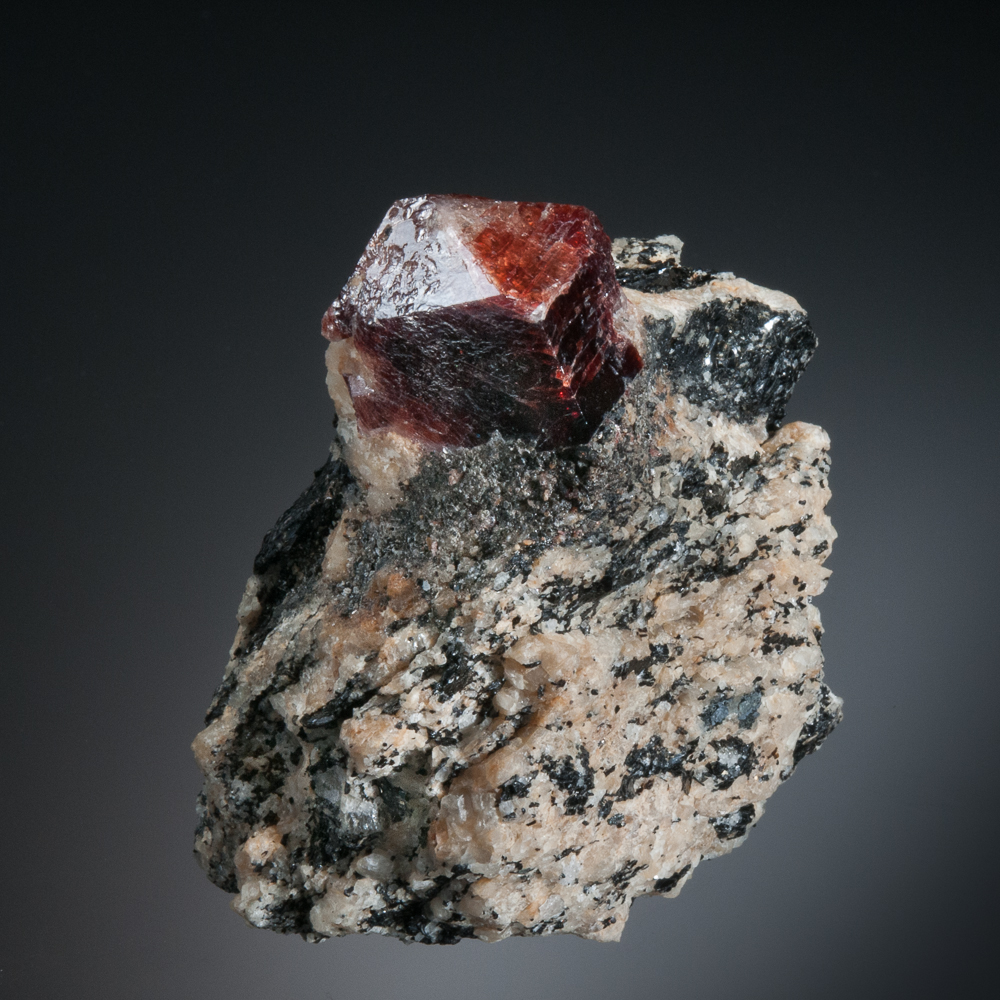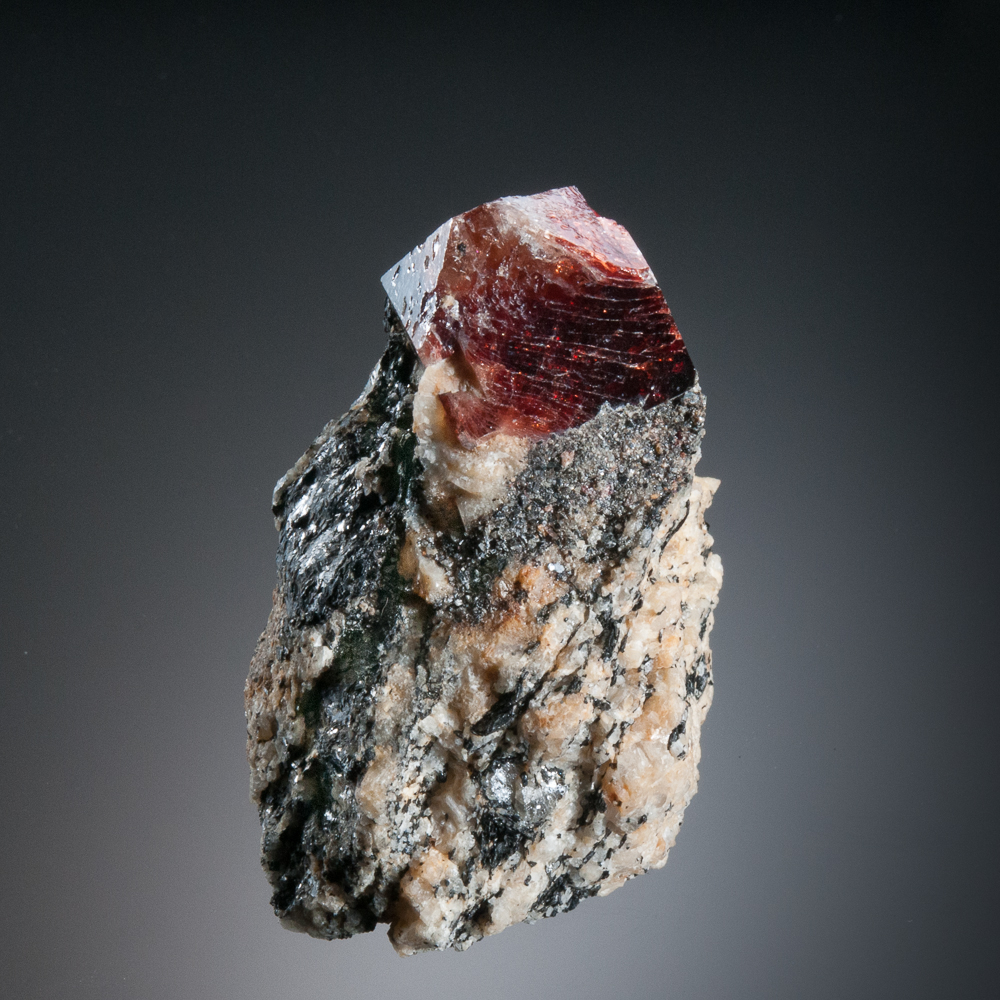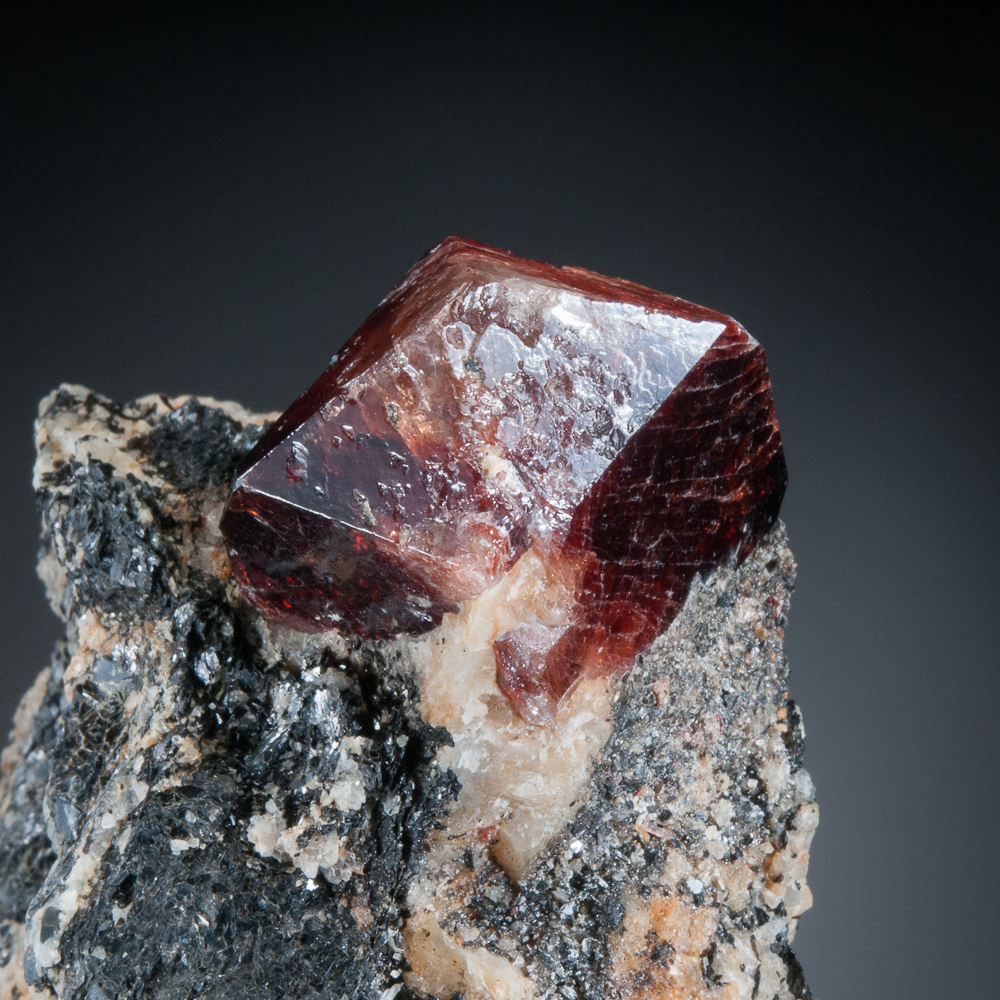Description
Detailed Description
This is a major zircon specimen. At 3 cm across (2.6 cm on edge), it is a remarkable crystal for a red zircon, particularly with this lustre and sharp form. It is the largest fine crystal I have seen from this 2017 Astor Valley find. The crystal grades from a deep wine-red to a much lighter almost pinkish colour at the termination. It has some nice internal hues under the lights.
There’s lots to say about this piece. First, the crystal, with a bit of matrix, is repaired to the matrix, and the matrix has been restored and stabilized. None of this is obvious from the main display view and it is not distracting. It is an important enough piece that I felt it was a great acquisition, taking these factors into account. This is a specimen absolutely worth preserving.
The crystal itself is in excellent condition. It minimally interacted with the surrounding minerals when it was forming, and there are a couple of spots where this is visible in the photos. In the back left-hand corner, there is some chipping, again not prominent as displayed. One edge, part way down the termination towards the rear, has a spot also.
The crystal is well formed, with very sharp prism faces in particular, and a gorgeous modification face at the corner that faces forward as displayed. The piece stands perfectly as photographed.
The zircon crystal glows bright yellow under short-wave ultraviolet light, as is shown in the last photos.
A fantastic cabinet specimen of red zircon.
About these Zircon Specimens
These zircons are from a relatively large 2017 find of zircons from Astor Valley, in Pakistan. A locality that has sporadically produced moderate amounts of material in recent years, this recent find produced a large number of pieces. However, fine zircons are proportionally very few. There are two key reasons for this. First, the zircons are enclosed within solid rock with other hard constituent minerals, such that a good number of zircons were broken when they were collected. However, the second reason is the much more prevalent issue based on the material I’ve seen: the zircon crystals seem to have formed more or less contemporaneously with most of the other minerals in the deposit – feldspar, biotite mica, and pyroxene – and as a result, most of the zircon crystals are not fully developed. Instead, most zircon crystal growth was interrupted by the growth of these other minerals, and therefore most zircons are simply incomplete, or malformed. And yet, among well over 1000 pieces I went through from this find, there were a few excellent specimens.

